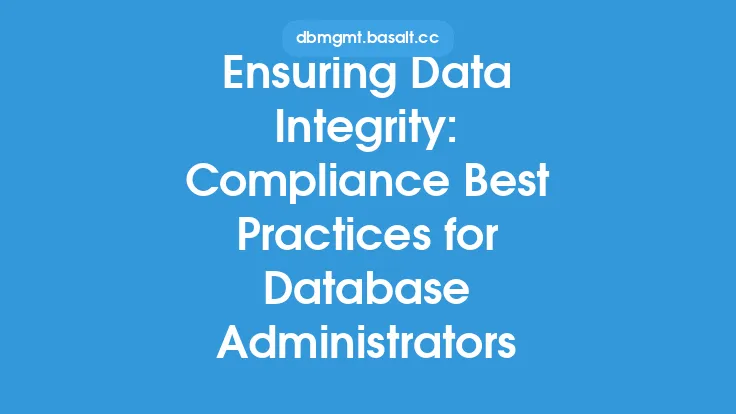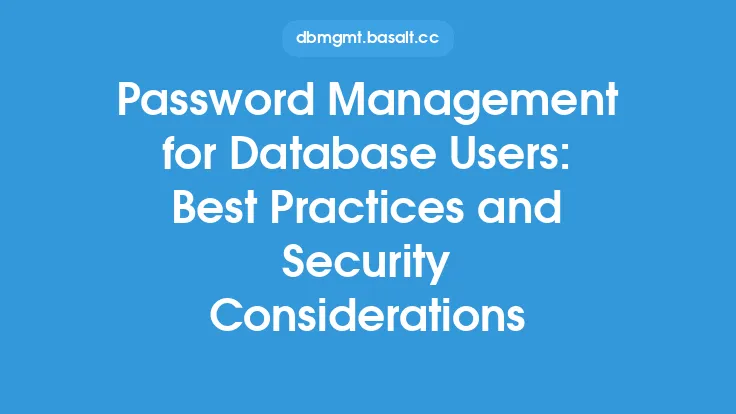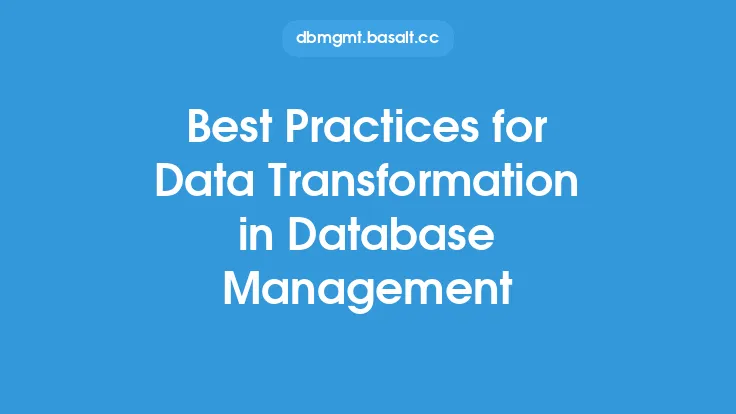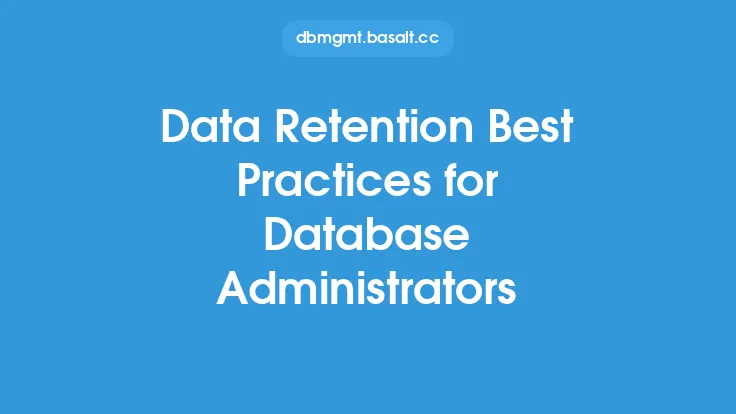As a database administrator, managing privileges is a critical aspect of ensuring the security and integrity of your database. Privilege management involves controlling access to database resources, such as data, schema, and system privileges, to prevent unauthorized access, data breaches, and other security threats. In this article, we will discuss the best practices for privilege management that database administrators can follow to ensure the security and compliance of their databases.
Introduction to Privilege Management
Privilege management is an essential component of database security that involves granting, revoking, and managing privileges to database users and roles. Privileges determine what actions a user or role can perform on a database, such as creating, modifying, or deleting data, executing system commands, or accessing sensitive information. Effective privilege management helps prevent unauthorized access, data breaches, and other security threats by ensuring that users and roles have only the necessary privileges to perform their tasks.
Principles of Privilege Management
There are several principles of privilege management that database administrators should follow to ensure the security and compliance of their databases. These principles include:
- Least privilege: Granting users and roles only the necessary privileges to perform their tasks, and revoking any unnecessary privileges.
- Separation of duties: Dividing privileges among multiple users or roles to prevent any one user or role from having too much power.
- Privilege escalation: Implementing mechanisms to prevent privilege escalation, such as limiting the ability of users or roles to grant privileges to themselves or others.
- Auditing and monitoring: Regularly auditing and monitoring privilege usage to detect and respond to security threats.
Best Practices for Privilege Management
To ensure effective privilege management, database administrators should follow these best practices:
- Use strong passwords and authentication mechanisms to prevent unauthorized access to the database.
- Implement role-based access control (RBAC) to simplify privilege management and reduce the risk of privilege misuse.
- Use privilege hierarchies to organize privileges in a logical and consistent manner.
- Regularly review and update privilege assignments to ensure that they are still necessary and appropriate.
- Use auditing and monitoring tools to track privilege usage and detect security threats.
- Implement separation of duties to prevent any one user or role from having too much power.
- Use encryption to protect sensitive data and prevent unauthorized access.
Privilege Management Tools and Techniques
There are several tools and techniques that database administrators can use to manage privileges effectively. These include:
- Privilege management software: Specialized software that helps manage privileges, such as privilege granting, revoking, and monitoring.
- Role-based access control (RBAC) systems: Systems that simplify privilege management by assigning privileges to roles rather than individual users.
- Privilege hierarchies: Logical structures that organize privileges in a consistent and manageable manner.
- Auditing and monitoring tools: Tools that track privilege usage and detect security threats.
- Encryption: Techniques that protect sensitive data and prevent unauthorized access.
Common Privilege Management Mistakes
There are several common mistakes that database administrators make when managing privileges. These include:
- Over-privileging: Granting users or roles too many privileges, which can increase the risk of privilege misuse.
- Under-privileging: Granting users or roles too few privileges, which can prevent them from performing their tasks.
- Failing to review and update privilege assignments: Failing to regularly review and update privilege assignments can lead to privilege creep, where users or roles accumulate unnecessary privileges over time.
- Failing to implement separation of duties: Failing to implement separation of duties can allow any one user or role to have too much power, which can increase the risk of privilege misuse.
Conclusion
Effective privilege management is critical to ensuring the security and integrity of databases. By following the principles and best practices outlined in this article, database administrators can ensure that their databases are secure, compliant, and protected against security threats. Remember to use strong passwords and authentication mechanisms, implement role-based access control, use privilege hierarchies, regularly review and update privilege assignments, and implement separation of duties to prevent privilege misuse. Additionally, use auditing and monitoring tools to track privilege usage and detect security threats, and implement encryption to protect sensitive data. By following these best practices, database administrators can ensure the security and compliance of their databases and protect against security threats.





